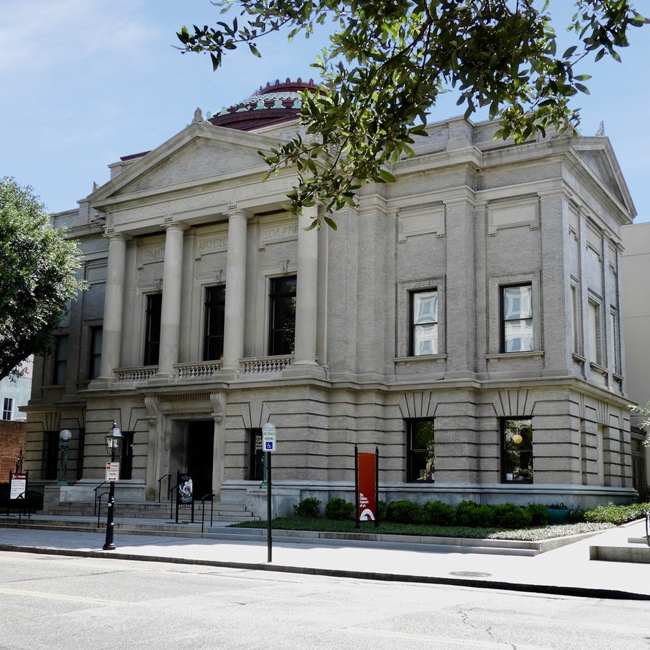
135 Meeting Street - Gibbes Museum of Art
Returning to downtown, we visit the Gibbes Museum of Art at 135 Meeting Street. Most locals refer to 135 Meeting as “the Gibbes” (and probably have no idea what the street number is). The Gibbes is the historic hub of the visual arts in Charleston.
Before the Gibbes was built, there was the Carolina Art Association of Charleston, chartered by the state legislature in 1858 to promote the arts, including art classes and exhibitions. There were several interruptions to the local arts, such as the Civil War, and in 1892, lack of funds caused the closure of the Carolina Art Association’s art school.
Fortunately, James Shoolbred Gibbes, a wealthy Charlestonian, had a passion for the arts. When he died in 1888, he left a bequest in his will of over $100,000 to build an art museum here. Gibbes’ bequest made possible the Beaux Arts style building, which was completed in 1905 and named after him. The building was added to in the 1970s, and in 2014, the Gibbes closed for two years for a major renovation at a cost of almost $14 million.
The renovation brought a major upgrade to the care of the permanent and visiting collections. One of the highlights of the renovation is the interactive nature of the collections. As a tour guide, the Gibbes provides me an important visual history of the early life and aristocracy of Charles Town; as an artist, the Gibbes challenges, excites and inspires me through its collections, exhibitions and classes.
Personally, memories abound – many paintings are like old friends that I go by to visit from time to time, and I continue to make new friends as the Gibbes adds to its permanent collection. Long before the renovation when my nieces were very small, the Gibbes hosted “small fry concerts” by the Charleston Symphony Orchestra; I would buy season tickets and take the girls. Everyone sat on the floor and had a wonderful time. (I probably learned most of what I know about music during those concerts!)
The first floor of the Gibbes is free and open to the public with an excellent gift shop, restrooms and a little café called “The Daily” with good sandwiches. It’s one of my go-to restaurants for a quick and delicious lunch between morning and afternoon tours.
Charleston’s heritage is rich in the visual arts, and the Gibbes is an excellent repository of that wealth. The permanent collections include Henrietta Johnston, the first female professional artist in America who was painting portraits in Charles Town by 1708, Charleston’s Edwin Harleston, a black artist and portrait painter in the early 20 th century, South Carolina native Jasper Johns, artist Mary Whyte and Mary Middleton with her renowned sweetgrass baskets, just to name a few. There is something to delight every art lover and always something new to see.
Next week we will continue to explore Charleston history through her places and people.